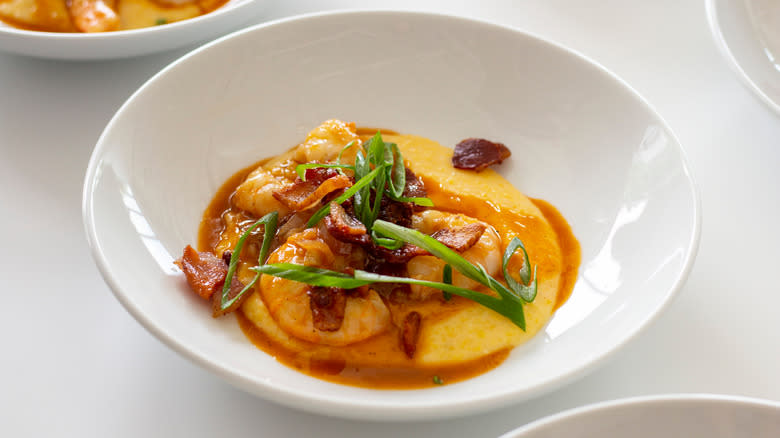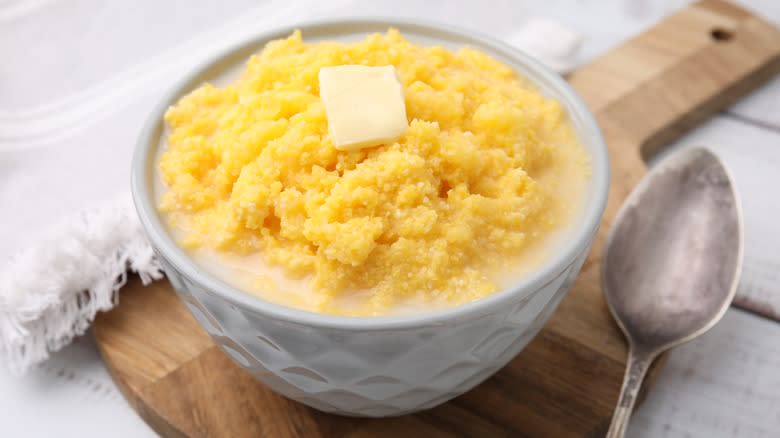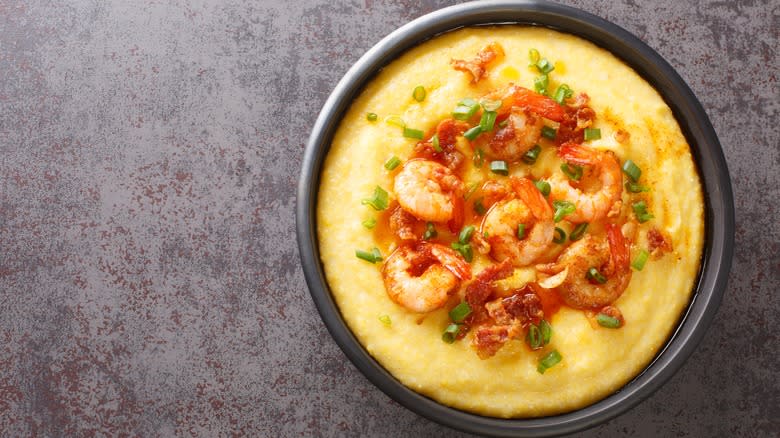The Texture To Look For When Choosing The Best Grits

People have been enjoying what we call grits for centuries. Native Americans first served this porridge-like dish, which later became a staple of Southern cuisine. The dish's creamy softness pairs beautifully with well-seasoned proteins, such as that classic coupling of shrimp and grits. And this stovetop version of a warm hug is pretty simple to make. It all starts with ground corn that is cooked with water or milk, some butter, and salt and pepper.
The pathway to grits nirvana, however, is not always easy. Like many beloved foods, people have some strong opinions on the right way and the wrong way to make grits. But one thing most cooks agree on is the style of corn to use. In the grocery store, walk right by those powdery kinds of grits and pick up some that have been stone-ground instead. To make good grits, you need coarse little pieces of corn that won't completely turn to goo when you cook them.
Read more: 14 Of The Oldest Cereals Still On Shelves
Different Kinds Of Grits

In the quest to make great grits, it's important to note that there are actually several different kinds. Just take a trip to the store and see how many options you have. Any package that says quick grits means you're getting finely ground corn, and you don't want that. Skip over the instant grits, too, which are even more processed. They usually come pre-cooked and dehydrated, and a lot of flavor and texture gets lost in the process.
Regular grits are OK in terms of texture; not as rustic as stone-ground grits, but a step up from quick grits. Stone-ground grits are the least processed type, and they have that coarse texture needed for a delicious dish. You may also see hominy grits, which are made from corn that has been treated in a special way called nixtamalization. That's when the corn is placed in a bath of water and lime (food-grade, of course) and cooked. The corn is then rinsed before being ground. In general, let your eyes be your guide for picking grits. The rougher the texture, the better the results.
Working With Coarse Grits

When working with coarse grits, there are a few things to keep in mind. This style will take longer to cook than more processed varieties. Stone-ground grits will take around 45 minutes to an hour usually, and you want to remember to stir them frequently to prevent them from burning. It will also help the grits have a smoother texture. Some cooks avoid this problem by cooking them low and slow in a crock pot. Stone-ground grits also require special care. Store them in your fridge or freezer to help maintain their freshness.
There are other ways to make great grits. Some suggest toasting them before cooking, which enhances the corn flavor. You can also experiment with the liquids you use, too. While some swear that only water will do, others recommend trading that ingredient for chicken stock. Cream is another popular suggestion, which will add some richness to the dish.
Read the original article on Daily Meal

